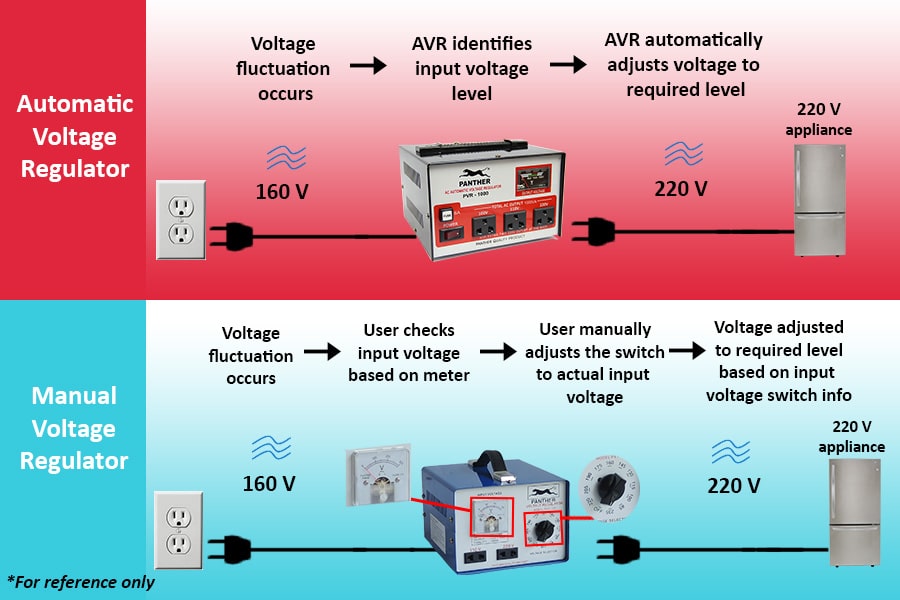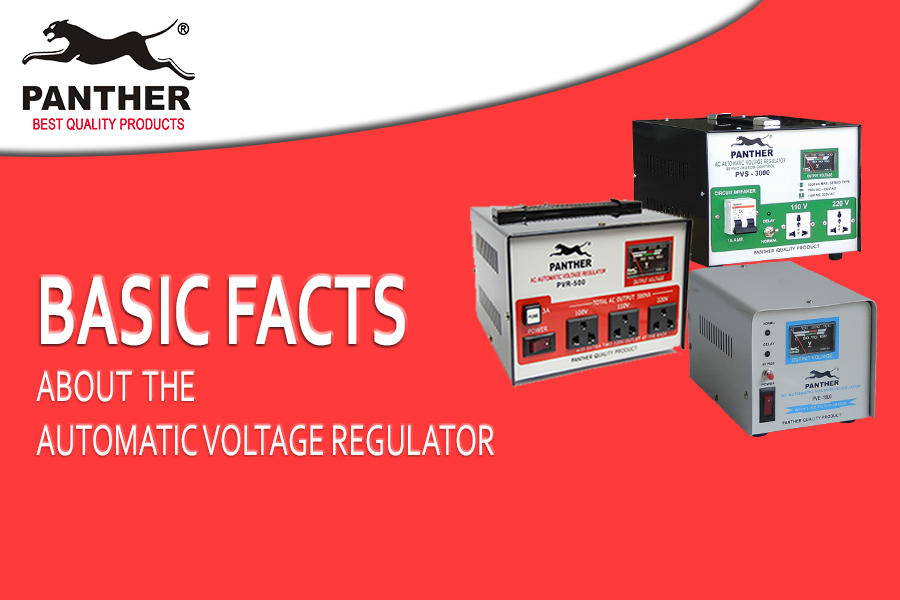
Table of Contents
As the name implies, both items protect your appliance from under- and over-voltage, as well as voltage fluctuations by regulating the voltage that is supplied to your appliance. By doing so, the voltage regulator is able to protect and prolong the performance and usage life of your appliance.
What is the difference between an Automatic vs Manual Voltage Regulator?
As mentioned, both items regulate the input voltage to the equipment’s required voltage, with two main differences:
1. Input voltage range
The Manual Voltage Regulator has an allowable input range of:
- For PVT 2000 Watts and below: 85V AC to 235V AC
- For PVT 2500 Watts to 15000 Watts: 100V AC to 220V AC
The Automatic Voltage Regulator’s allowable input range varies depending on the AVR Series
- PVE Series: 180V AC to 250V AC
- PVR Series: 150V AC to 250V AC
- PVS Series: (PVS 500 to 2000) 160V AC to 240V AC // (PVS 3000 to 5000) 190V AC to 250V AC
**These specifications are subject-to-change without prior notice. Please consult us directly in case of questions
2. Automatic vs manual voltage regulation
The Automatic Voltage Regulator (AVR) is able to automatically adjust the input voltage into the desired output voltage required by the appliance
On the other hand, the Manual Voltage Regulator requires the user to manually indicate the input voltage level first. It will then adjust to the desired output voltage required by the appliance, based on the input voltage level indicated by the user

When would you choose a Manual Voltage Regulator?
We recommend you purchase a Manual Voltage Regulator if the following applies to you:
- If you live in an area where the voltage supply is consistently low. There’s minimal fluctuation per se, but the voltage supply is NOT 220V. This way, you can just indicate the average input voltage once, and leave the Manual Voltage Regulator alone
- If you live near sites that regularly use a lot of power at certain times of day, where the voltage drops dangerously low (less than 150V AC) and stays there for a period of time
CAUTION: Manual Voltage Regulators’ input voltage switch needs to be adjusted by the user if there is a change in input voltage. Failing to do so could result in high output voltage (>250V AC), which might damage your appliance
For all other situations, we recommend you purchase an Automatic Voltage Regulator (AVR) instead




0 Comments